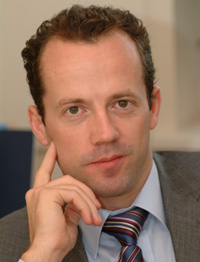Disaster in the making?
on
Disaster in the making?
August is a month notorious in Russia as a disaster month. The 1991 hard-line Stalinist coup, the 1998 financial meltdown, the 2000 sinking of the Kursk submarine, various suicide bombings, plane crashes and other disasters all happened in the month of August.
This year disaster struck in August with a mid-air plane collision at the MAKS air show in Moscow, a suicide bombing in the city of Nazran and, worst of all, the accident at the Sayano-Shushenskaya hydroelectric power station in Khakasia that left 75 people dead.
Russian authorities were quick to blame a number of individuals, like former power sector boss Anatoly Chubais, for this disaster and to create the impression that this was one of these freak August accidents. But was it really a freak accident – or was it exemplary for the technological state of Russia’s power sector? And if the latter, are more problems to be expected?
The accident in the Sayano-Shushenskaya hydroelectric power station, built in 1968, actually underscores not so much the risks that the month of August brings in Russia as the fact that Russia’s power sector is in technological dire straits.
A closer look at this particular accident and Russia’s power sector as a whole reveals a number of weaknesses that may turn out to be the Achilles' heel for Russia’s energy sector if they are not remedied in the not too distant future.
Even President Dmitry Medvedev admitted that Russia, which saw itself as a world leader in engineering under the Soviet Union, was now "very far behind" other countries. Reason enough to look at the causes of the deterioration of Russia’s energy infrastructure and to think about possible remedies.
First of all we are dealing with a management problem. During Soviet times the power sector was managed in a centralized way with the sole aim of delivering energy to the end user regardless of the cost. Under this strict central system of control, the energy generation and distribution system was, although inefficient, technically reliable. In recent years, market mechanisms have been introduced and vertically integrated companies have been split up into generation, distribution and trading companies, but nothing has replaced the old centralized management system. It has simply ceased to exist.
Another factor that seriously undermines the reliability of Russia’s power system is its chronic underfunding. Only 45% percent of Russia’s electricity trade is deregulated. The remaining 55% is sold at prices that are kept artificially low and that do not allow energy companies to invest in technological upgrades. Spot prices on the free market are significantly higher than regulated tariffs but are still much lower than in Europe. The situation is changing slowly but it will take a very long time before the damaging effects of 20 years of underfunding of the energy sector will be undone.
 |
| Jeroen Ketting is founder and managing director of the Lighthouse Group, a Moscow-based energy consultant and service provider. |
Last but not least, the high degree of political impunity in Russia has certainly contributed to the current state of the power sector in general and the August dam disaster in particular.
With its severe climate and extremely high level of energy consumption Russia’s grim future can only become more hopeful if a whole range of measures are taken, addressing not only technical but also political, ethical, legislative, organizational and financial issues.
Unfortunately, a comprehensive approach to bringing Russia’s power sector into the 21st century is a lot to ask for from the powers that be and it is to be feared that other months than just the ill-famed month of August will gain notoriety as Russia's cataclysmic months.


Discussion (0 comments)